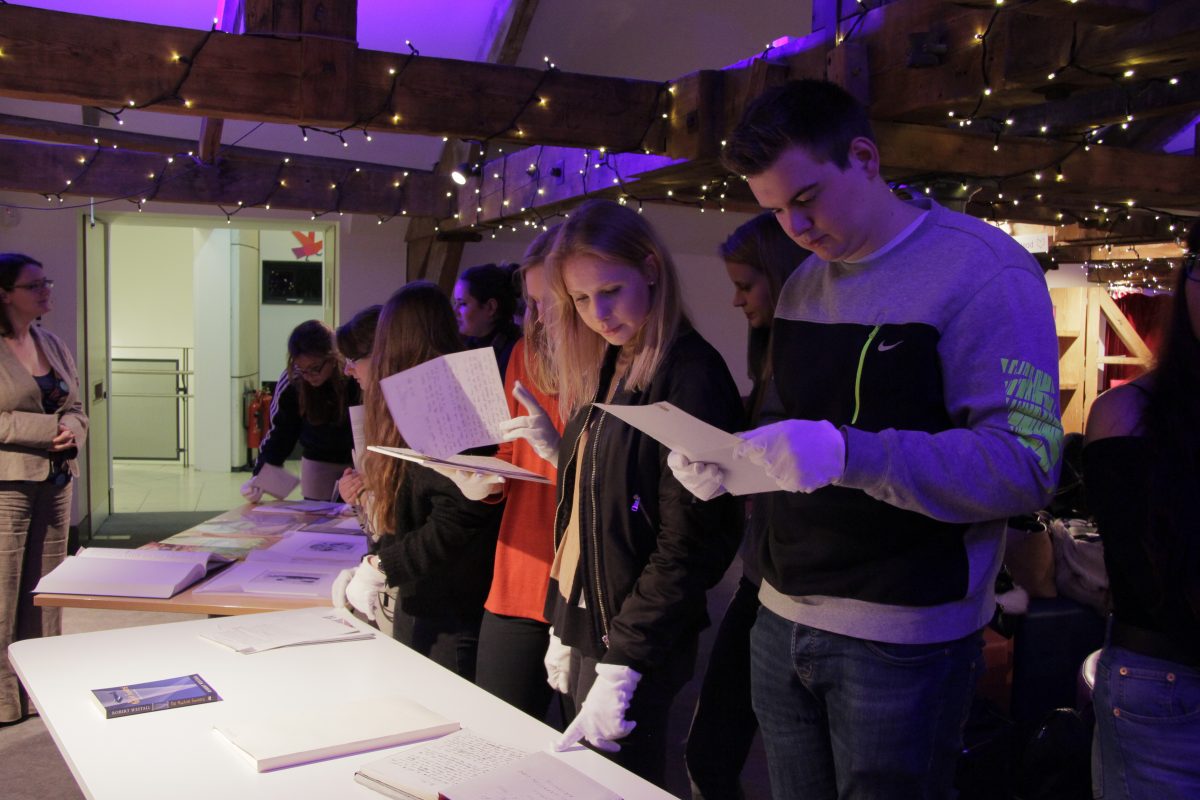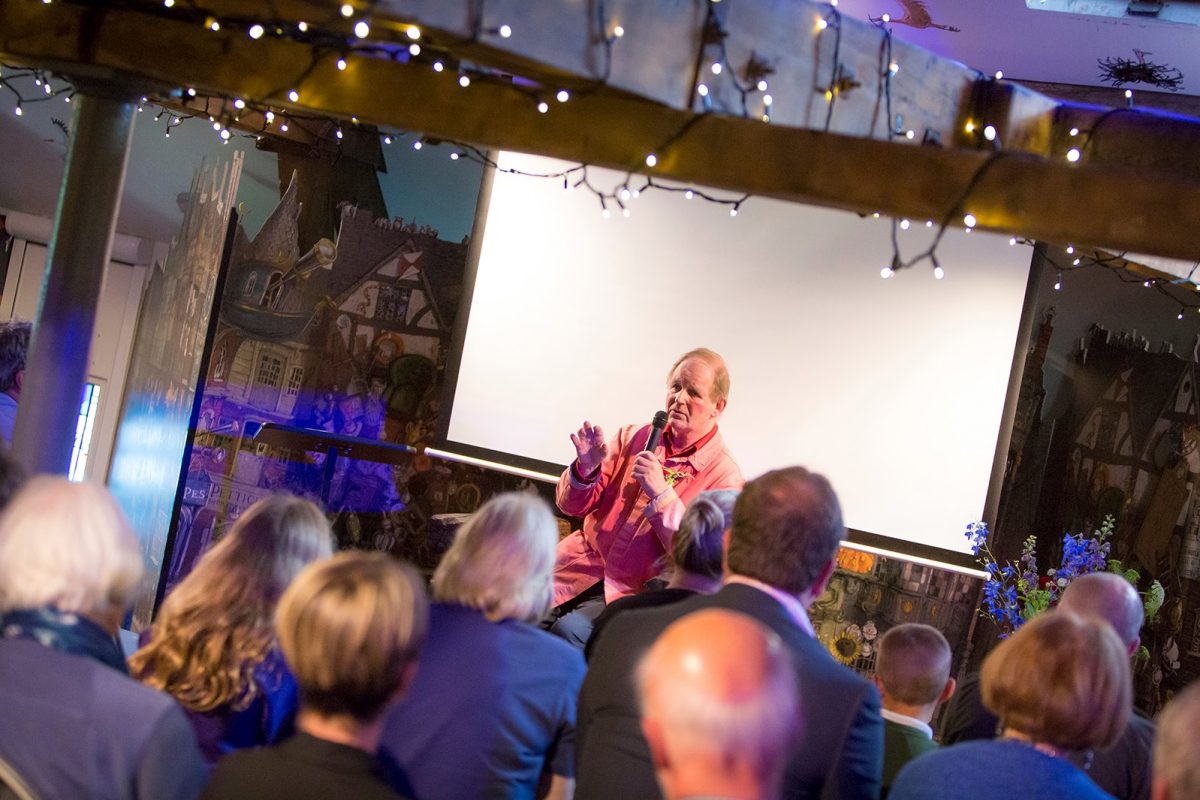In this guest post, Dr Lucy Pearson, Lecturer in Children’s Literature at Newcastle University’s School of English Literature, Language and Linguistics and Gavin Hetherington, a BA English Literature with Creative Writing student, reflect on the third year students’ visit to Seven Stories: The National Centre for Children’s Books in October.
Dr Lucy Pearson
My third-year module ‘Home, Heritage, History’ asks students to think about these three themes in the children’s books of the twentieth century, and to think about how English Literature might use archives and museums. This module evolved from my close working relationship with Seven Stories – I’m taking full advantage of having a heritage organisation devoted exclusively to children’s literature right on our doorstep! One of the highlights of my teaching year is the module field trip to Seven Stories, and this year’s trip was extra special.
The team at Seven Stories stayed on after hours to give my students exclusive access to the Seven Stories Visitor Centre in the Ouseburn Valley. The Collections Team brought along some archive material for students to have a closer look at: we explored some of Helen Craig’s original artwork for Angelina Ballerina, looked at some of Robert Westall’s correspondence and his manuscript drafts of The Machine Gunners, and investigated the creation of Tom’s Midnight Garden and The Borrowers through correspondence, artwork, and drafts. Mary Norton’s letter to her illustrator Diana Stanley in which she writes about the horror of the blank page when starting a new work struck a chord with us all! It’s a special feeling to handle the original material and see authors’ false starts, crossings out and uncertainties.
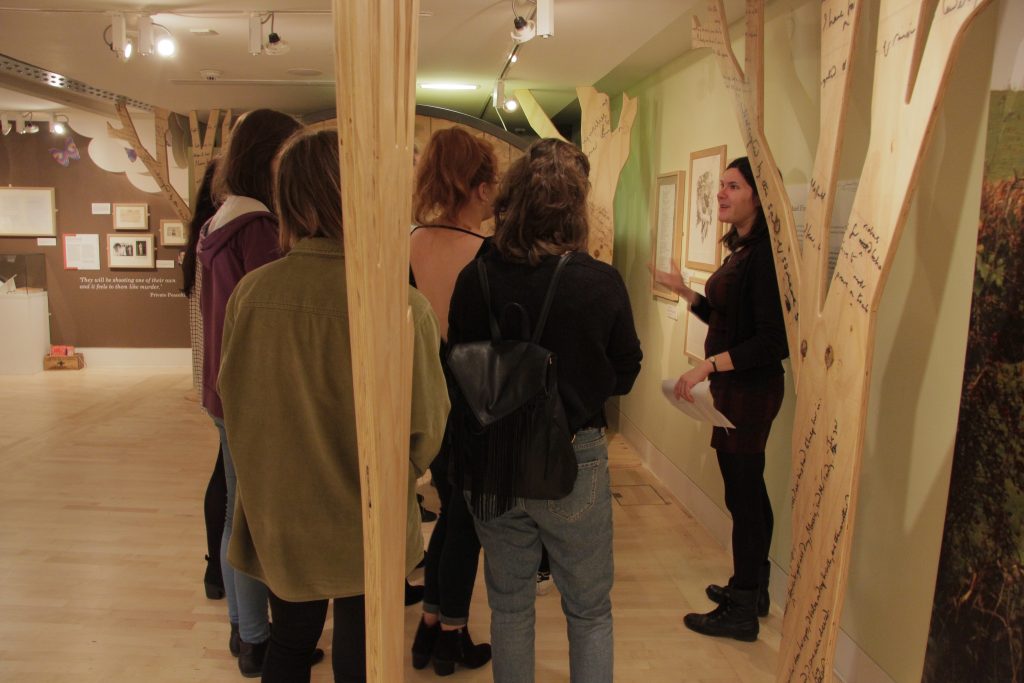
Students also had a chance to explore the galleries and think about how Seven Stories shares our heritage of children’s literature with the public. This was especially exciting this year because our KTP Research Associate Jessica Medhurst came along to give students a tour of Michael Morpurgo: A Lifetime in Stories and talk about the ideas behind the exhibition. Jessica has been working closely with the Seven Stories exhibitions team and conducting research to support their development of the exhibition, so she knows everything there is to know about the Morpurgo exhibition. The exhibition theme of storytelling was especially interesting to members of the group who are also creative writers: student Gavin Hetherington gives his account below.
In the Rhyme Around the World exhibition, Storycatcher Lawrence gave students a taste of the experience regular visitors to Seven Stories can enjoy – and they had some fun exploring the interactive aspects of the exhibition!
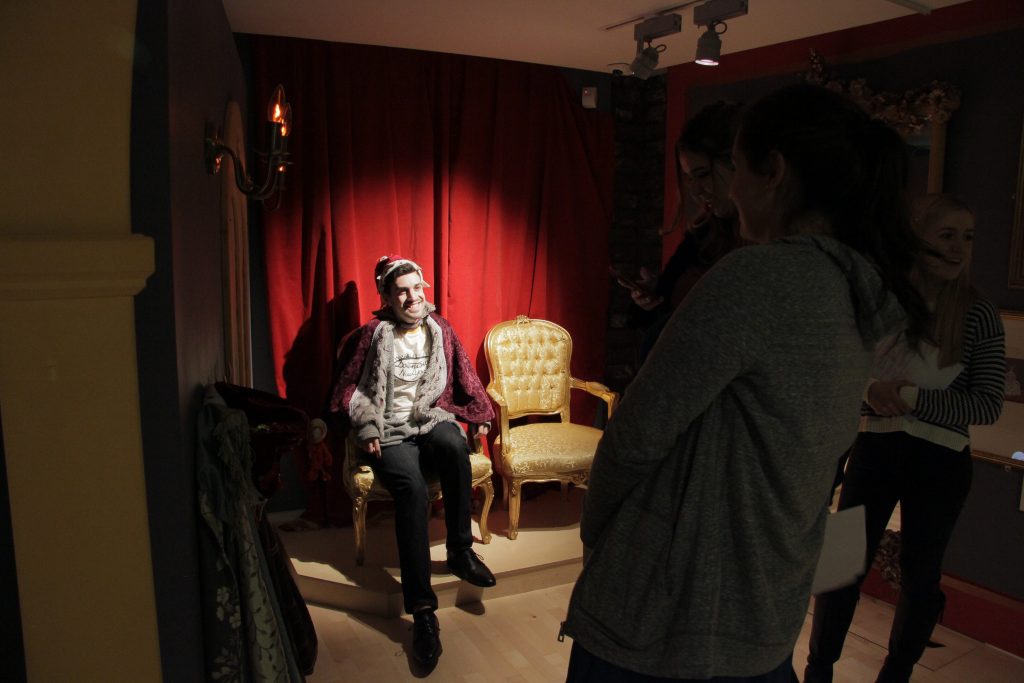
We finished the evening with a quiz, where students showed an expert knowledge of children’s books (and a healthy competitive streak!)
If you’re envious of the students’ exclusive access to Seven Stories, it’s not too late to sign up for our Being Human event on 24th November, which will offer all the fun the students enjoyed plus a little bit more.
Gavin Hetherington
As a creative writer, visiting Seven Stories was not only educational, but also inspirational. The biggest part of this children’s literature archive is that they have acquired original materials from iconic authors in order to preserve and protect them from being shipped elsewhere. In doing so, this material is available to be admired, ensuring that visitors can always walk away with something from the experience.
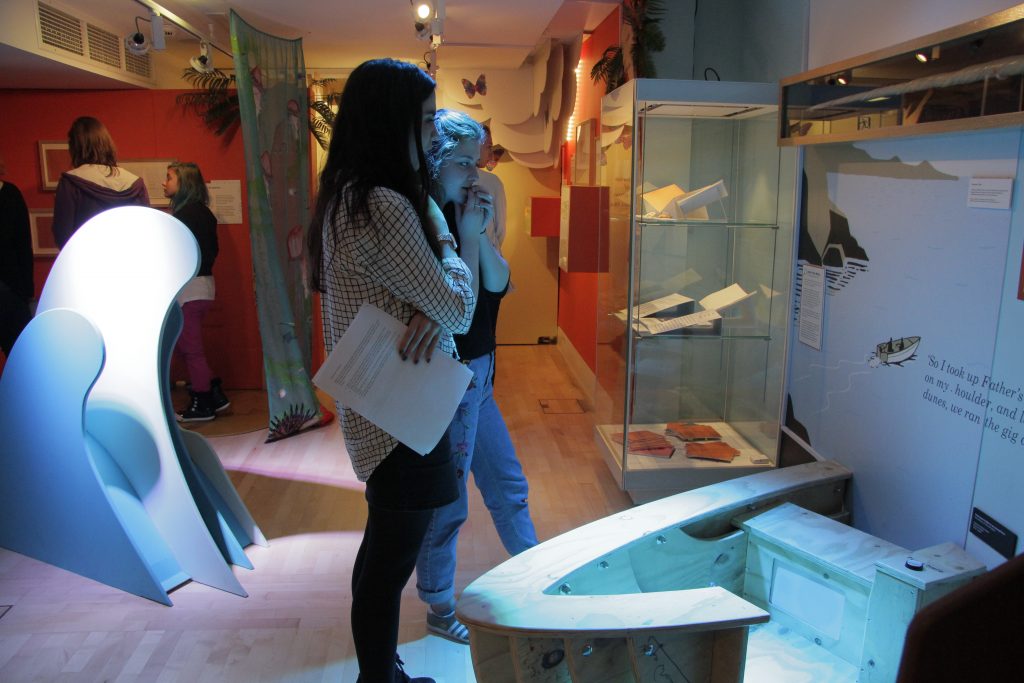
To go from Michael Morpurgo’s ‘Dreamtime’ in his exhibition, to the ‘Cabinet of Curiosities’ – a short walk away – shows how deeply connected every part of his writing process is, from his creative ideas whilst walking through the pastoral, to the illustrators that have collaborated on his work, boasting watercolour paintings that reflect some part of his stories. We are submerged in his mind and are able to interact with the pieces that make up his imagination, and it spills over into the visitors’ reality. Morpurgo himself, in a very cosy setting of a shed and a recording of the famed author speaking directly to us, said that we should ‘fill our heads with this world of which you are a part’ and that, for us creative writers, it is not ‘magic’ that conjured the words we seek to write, but ourselves, as we write the story we truly believe in, from our minds to the paper before us.
I could not help but be fascinated as Morpurgo himself comes to life, as do the other writers who have created such timeless children’s stories, with the manuscript of The Borrowers and the facsimile of Tom’s Midnight Garden. These personal objects reveal the process of their writing, that the finished product we all cherish began in a way that the creative writer can relate, and thus helps us to aspire to be like them. The exhibits in Seven Stories humanises the writers, shows us the processes of their hard work and how they each used their own modes of magic to bring their stories to life.


